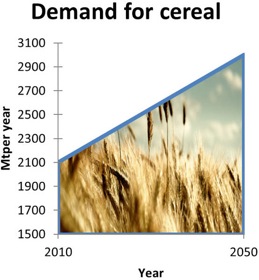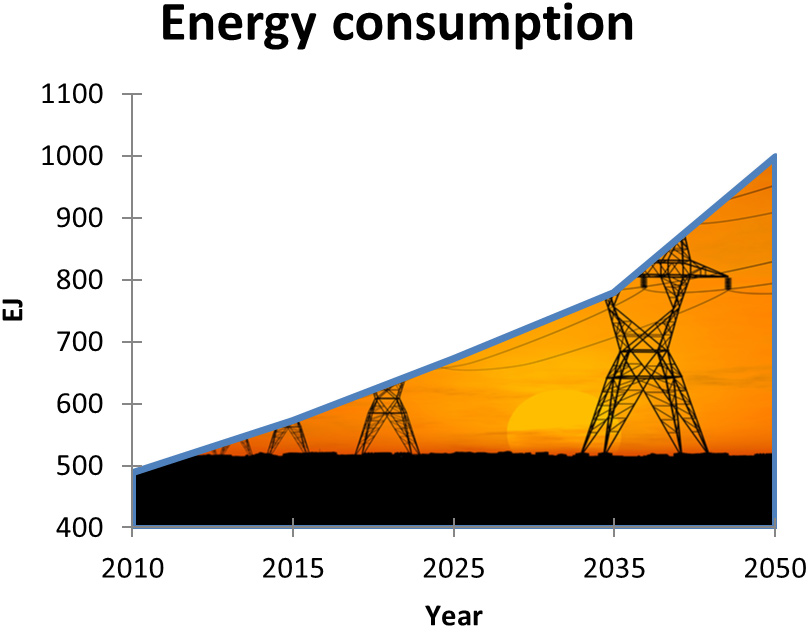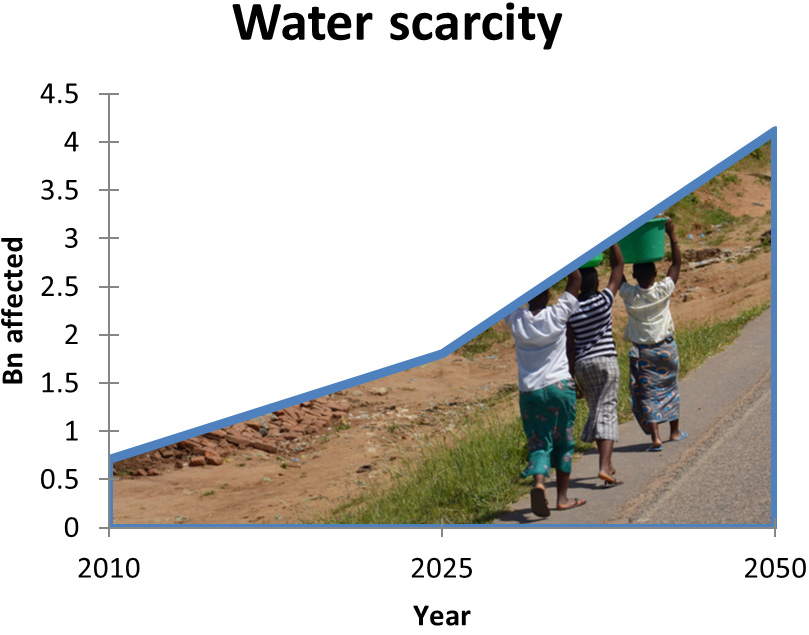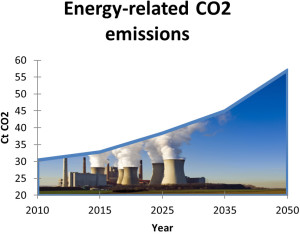The Global Challenges
In 2050 there will be about 9.3 billion people sharing the same planet. Today, the world faces intertwined challenges of food, water, energy security, climate change, and desertification. Neither of these challenges is without solutions. At the same time, it is clear that we cannot afford a response to one challenge that comes at the expense. The most significant challenges of our time are closely interlinked – the same must be valid for the answers.
Food scarcity
Gross investment requirements between 2007 and 2050 for irrigation development and management are estimated at almost US$1 trillion. Moreover, land protection and development, soil conservation, and flood control will require around US$160 billion, according to The Food and Agriculture Organization of the United Nations.

Energy consumption
The IEA’s Energy Technology Perspectives 2010 presents a baseline scenario assuming no new energy and climate policies. The design predicts that primary energy use will rise by 84% – and energy-related CO2 emissions will roughly double – by 2050. In the face of climate science, such numbers leave little room for doubt that a low carbon/renewable energy revolution is necessary.
This revolution can bring about substantial benefits not just for the climate but also for enhanced energy security and accelerated economic development.

Climate change
The atmospheric concentration of CO2 passed 391,5ppm in 20116. This is higher than it has ever been in the last 650,000 years. The IPCC had earlier advised that it would be necessary to achieve at least a 50 % reduction in global CO2 emissions by 2050, compared to 2000 levels.
Leading experts are now warning that even this target may prove inadequate for preventing severe consequences of global warming.
Water scarcity
Water scarcity already affects a large portion of the global population. And the situation is not expected to improve any time soon. According to UNEP, water use for crops and irrigation must double by 2050 to meet the Millennium Development Goal on hunger.
Imbalances between availability and demand, degradation of ground- and surface water quality, and escalating regional and international competition for water resources are among the key issues that must be addressed.

Desertification
The livelihoods of more than one billion people in some 100 countries are threatened by desertification. It is estimated that desertification and land degradation represent an income loss of US$42 billion per year. Further, the barren lands lost annually could have provided 20 million tons of grain.
Even though desertification is most often directly triggered by localized drought, human activities are almost always a critical underlying cause. Therefore, it is essential to introduce sustainable cultivation and irrigation practices and implement programs to prevent over-grazing and unsustainable outtake of biomass.

